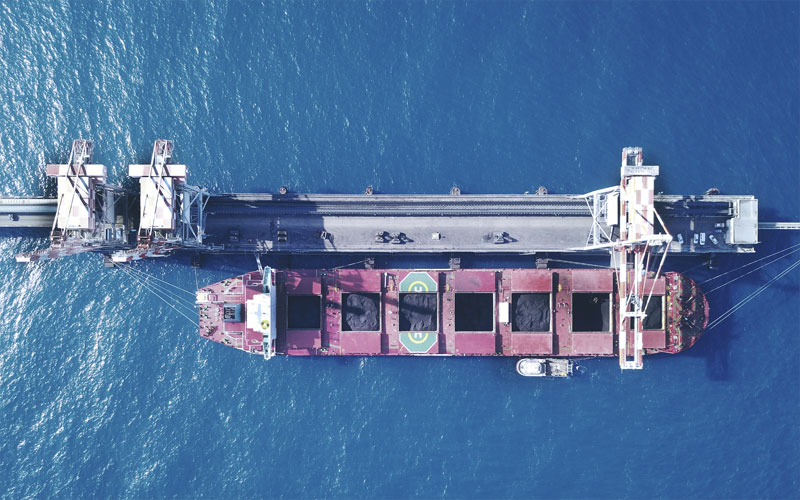There were many risks involved in the operation of seagoing bulk carriers. Shipboard safety issues that are important require careful planning and caution. This website serves as an instant reference to the international shipping industry and offers guidance and details on loading and discharging bulk cargo types. These restrictions are established by the classification societies. It is vital to limit the chance of the ship's structure being stressed, and to comply with the safety requirements to ensure safe passage on the sea. There are pages with details covering a range of subjects related to bulk carriers. They are helpful both for those onboard and those on the shore at the terminal.
General characteristics of seagoing bulk vessels
Bulk carriers may be single-deck vessels. They are equipped with top-side tanks as well as side tanks that hoppers can use. These tanks are used for cargo spaces. They are built to carry solid bulk cargo. Anything that isn't liquid or gas but solid bulk cargo, includes any material consisting of a mixture or granules, or any other material that has an uniform composition. It can be loaded directly into the cargo area of a vessel and does not require any storage. Examples of dry cargo are sugar, grains, and bulk ores. Bulk carrier, in its broadest sense can refer to any vessel which are designed specifically for carrying bulk cargo, such as liquid cargo or solid cargo. Tankers would also be included. The term is typically used for ships that transport solid bulk cargos. This includes grains and other agricultural commodities. Click over to this valemax blog for more.

What Is A Bulk Transport?
"A ship which is intended primarily to carry dry cargo in bulk, including such types as ore carriers and combination carriers"
Carrying capacity between 3,000 and 300,000.
Average speed 12-15 knots
-Single deck ships, ie no tweendecks
Small to medium-sized bulk carriers (carrying capacity up to 40,000 tonnes) typically come with cargo handling equipment, while larger vessels use facilities on the shore for loading and unloading
The cargo holds are typically spacious and free of obstructions. Large hatch sizes allow for easy loading and unloading.
Ballast holds are a standard element on bulk carriers. This can be used for ballast voyages to increase stability. Some additional holds could be allowed for partial ballasting, however only when in port.
They have single pull, stacking or hydraulic type steel hatch covers.
Four kinds and sizes of ballast tanks:
Sloping topside wing tanks
Sloping bottom side wing tank
Double bottom tanks
Ballast for peak and after peak water tank.
Solid bulk cargo? Any other substance, other than gasoline or liquid made up of the mixture of smaller pieces that are uniform in composition and loaded directly into cargo spaces. It is imperative to ensure that all cargoes are ready for loading, regardless of whether they're "clean" or "dirty", and that there isn't any contamination. Cleaning must be adequate to allow the cargo to be loaded. It generally, it is necessary for a surveyor to assess the space to ensure it is suitable to load. To avoid contamination, it's important that any residues left from previous cargoes have been removed. The bulk cargo is the most susceptible to being damaged by water. This means that the storage areas should be dry for the cargo to be accepted. In addition hatch covers need to be waterproof and sealed when necessary to prevent water intrusion. All fittings in the hold (pipe guards and bilge covers etc.) must be examined. You must inspect each fitting within the hold (ladders,pipe guards, bilge covers...) to ensure that they're in good operating condition. They could be a cause of damages to conveyor belts and cause delays. The ship may be held responsible if these items are accidentally discharged with cargo. Peruse this dry bulk vessels blog for more.

Bulk Carrier, Bulker? Bulk Carrier, Bulker? A vessel that can transport dry cargo. It is not intended to be a liquid bulk tanker or carrier. Bulk carriers that are conventional have only a single deck that has a one skin, double-bottom, hopper side and topside tanks. Bulk carriers are able to carry heavy ore and lighter grain to their highest weight. The loading, transportation and discharge of dry bulk cargo are not as straightforward or simple as people imagine.
Carrier for bulk materials that does not require equipment
A lot of bulk cargoes have dangerous properties, and they can alter their properties after passage. The ship may be damaged by incorrect loading e.g. It is possible for a ship to bow when it is not loaded properly. This is called stress. This can have severe consequences for the sea's life during adverse weather conditions. Other cargoes could be affected by the residues from prior cargoes. Damage from water can have a devastating effects on certain bulk cargoes e.g. cement power. It is difficult to verify the amount of cement used and the weight of cargoes loaded and unloaded. These elements can have severe effects on how bulk cargoes are transported safely. Discharging bulk cargo using? The bulk cargoes naturally form into circles when loaded on conveyor belts. This angle is called the "angle of repose" and is dependent on the specific cargo. Iron ore-based cargoes, for example, will form an cone with an angle. Cargoes that are free to flow freely will create an angle-shaped cone that has a low angle. A cargo with low angles to repose is more susceptible to shifting during passage. Bulldozers may need to be utilized with certain items to spread the load onto the sides of the hold when the cargo is near to completion. Dry-bulk carriers depend on the shoreline facilities for loading and discharging cargo, however bulk carriers are also able to self-unload with cranes or conveyors on deck.
